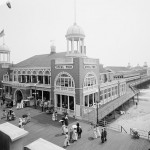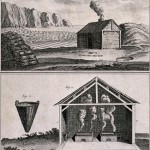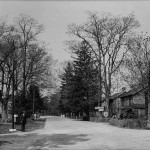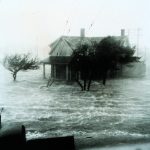Jersey Shore
The roots of the National Guard trace to Philadelphia and congressional action during the city’s decade as U.S. capital. Pennsylvania, New Jersey, and Delaware all have Guard units, including the 177th Fighter Wing at Atlantic City Airport.

Founded in the 1850s, Atlantic City was the first great middle-class resort in the nation. The Steel Pier became one of the most famous entertainment piers in the United States.

With the Revolution, the young nation lost its main source of salt--England--and needed a new supply. Pennsylvania turned to a scheme involving Toms River, New Jersey, to no avail.

New Jersey’s Pine Barrens, a forest and wetlands area, has played a varied but vital role in its region’s cultural and economic history.

Hurricanes and Tropical Storms
The Greater Philadelphia area's position near the Atlantic Ocean has always made it vulnerable to hurricanes and tropical storms. When storms make landfall, the coast is particularly vulnerable due to seawalls and storm surge.
